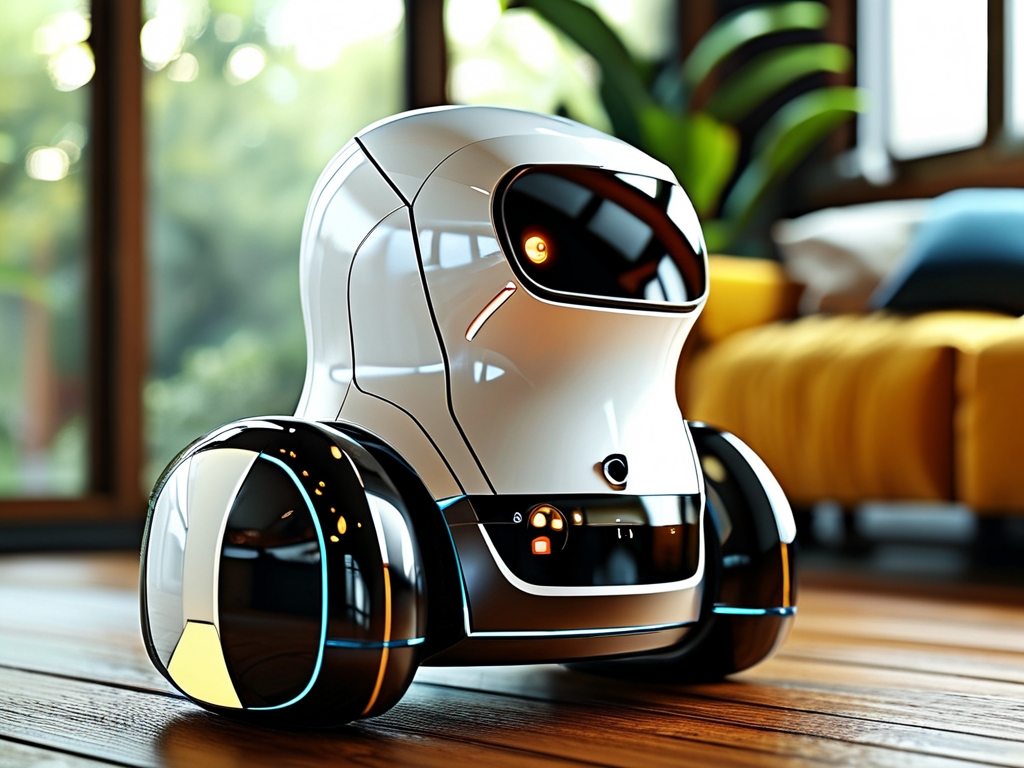The 21st century has witnessed an unprecedented fusion of artificial intelligence, robotics, and IoT systems, culminating in the rise of next-generation home robotics technology. These machines are no longer limited to vacuuming floors or playing music; they have evolved into multifunctional companions capable of redefining modern domestic life. This article explores the cutting-edge innovations driving this revolution and their implications for households worldwide.

1. Core Technologies Behind Advanced Home Robots
Today’s most sophisticated home robots integrate four groundbreaking technologies:
- Adaptive AI Algorithms: Systems like Tesla’s Optimus and Samsung’s Ballie employ neural networks that learn user preferences over time. For instance, Amazon’s Astro can memorize family routines, adjusting lighting and temperature autonomously.
- Tactile Sensor Networks: MIT-developed “electronic skin” enables robots like Miko 3 to detect pressure, temperature, and texture, allowing safe interaction with children and fragile objects.
- Swarm Intelligence: LG’s CLOi series demonstrates how robot teams can collaborate—one cooking while another manages laundry, synchronized via 6G networks.
- Self-Recharging Ecosystems: Boston Dynamics’ updated Spot model can now self-diagnose mechanical issues and navigate to charging stations using spatial mapping.
2. Transformative Applications
Modern home robots excel in three critical domains:
- Health Guardianship: Toyota’s HSR robot monitors elderly users’ vital signs through embedded biosensors, automatically alerting hospitals during emergencies. During COVID-19, UV-C disinfecting robots like Xenex’s LightStrike reduced household infection risks by 98%.
- Education & Childcare: Sony’s reEngineered Aibo teaches languages through interactive play, while startup Moxie’s emotion-aware AI helps children develop social skills.
- Sustainable Living: ECOVACS’ WINBOT W2 reduces water waste by 70% during window cleaning, and Bosch’s gardening bot employs computer vision to optimize irrigation.
3. Ethical and Technical Challenges
Despite progress, significant hurdles remain:
- Privacy Concerns: A 2023 Stanford study revealed that 68% of smart robot users worry about data leaks. Companies like iRobot now offer blockchain-based encryption to protect user information.
- Energy Efficiency: While Honda’s E-DT robot achieves 12 hours of operation per charge, industry leaders aim to triple this using solid-state batteries by 2026.
- Human-Robot Dynamics: Japan’s METI reports that 41% of seniors feel uneasy relying on machines for care, highlighting the need for improved emotional AI interfaces.
4. The Road Ahead: 2030 Projections
Industry analysts predict three seismic shifts:
- Material Science Breakthroughs: Graphene-based actuators could make robots 80% lighter while doubling strength.
- Quantum Computing Integration: Google’s Quantum AI team estimates that quantum-enhanced robots will solve complex tasks (e.g., meal planning with dietary constraints) 100x faster by 2028.
- Regulatory Frameworks: The EU’s proposed “AI Liability Directive” will mandate transparent algorithms for domestic robots by 2025.
As we approach an era where robots handle 40% of household chores (McKinsey, 2024), the fusion of empathetic AI and advanced mechatronics promises not just convenience, but a fundamental reimagining of home life. However, realizing this potential demands continuous innovation in ethics, security, and human-centric design. The ultimate goal remains clear: creating machines that don’t merely serve, but meaningfully enhance the human experience.


